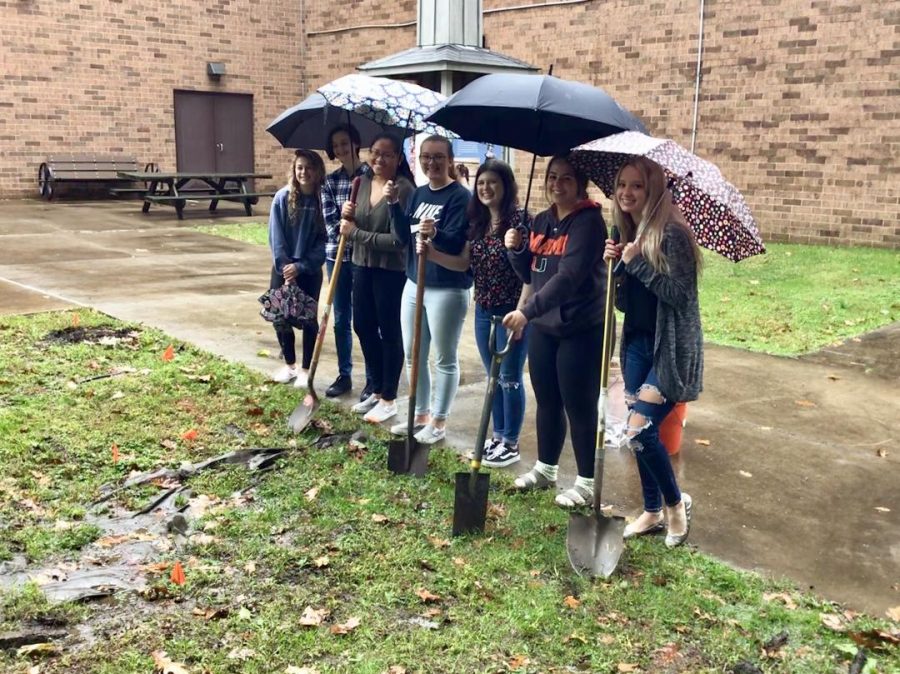GATE students help rain garden become a reality
April 15, 2020
Next to the greenhouse, in the rear of the school, students will find a new feature to Shaler Area High School. The high school GATE program, along with Girty’s Run Watershed Association and Deco Resources, has installed a rain garden for the benefit of the school’s local environment. This garden will hopefully serve as an educational tool for students to learn about ecology and horticulture.
A rain garden is a generally small section of dug out soil that is used to capture water that would otherwise be runoff. This water is used by plants and can improve soil erosion and the quality of the landscape.
Shaler Area’s GATE program is very involved with Fairchild competitions through Phipps Conservatory in Oakland. These competitions feature a variety of ecology-based ideas, and challenge students from different schools to develop plans for a greener and more sustainable plan for the future.
One of last year’s challenges was called ‘Green Storm Water Solutions.’ It asked students to design a way to capture and use storm water at their high schools that would potentially be wasted.
Current juniors Jaime Eichmiller, Caitlin Fedorek, Alyssa Juzwick, Dakota Carr, and Olivia Jarzynka, along with current sophomores Anna Sheets and Rebecca Schiavone began to develop ideas for the project.
“The girls put together a big plan… part of that plan was to include a rain garden by the greenhouse,” GATE sponsor Christina Palladino said.
To develop this plan, the team consulted Donna Pearson of the Girty’s Run Watershed Association, a local conservation group based in Millvale.
“I provided resources and helped calculate runoff from an area and how to build a rain garden that could capture that amount,” Pearson said.
Following this, Pearson applied for a grant through the Allegheny County Conservation District to make this hypothetical idea a reality.
“I found this grant… it seemed like a perfect idea because they had already started and put so much work into it,” Pearson said.
The team was given the grant, worth over $6,700, and began work on the physical implementation of the garden outside.
“We went out in the snow to measure the plot, it took a while, but ultimately, we got it,” Fedorek said.
The GATE program then contacted Deco Resources, a landscape architecture and environmental design firm based out of Pittsburgh.
Deco Resources began drawing schematics and plans for the placement of the garden, and eventually dug out what would become the garden’s basic structure.
On October 25th, several of the GATE students collaborated with the owner of Deco Resources, Anthony Stewart, and Pearson to begin the planting process.
“We had a lot of fun learning about the different types of soil and planting the different flowers and bushes that we picked out,” Alyssa Juzwick said.
The students chose a variety of plants native to Western Pennsylvania to inhabit the rain garden. The main feature is a spicebush that sits in the deepest part of the small depression. It is still a sapling, but will grow to become larger in scale.
The students hope that the new seeds and saplings will survive the winter, but to ensure the growth of Shaler’s ecological interest, they are planning a second planting to coincide with Earth Day.


